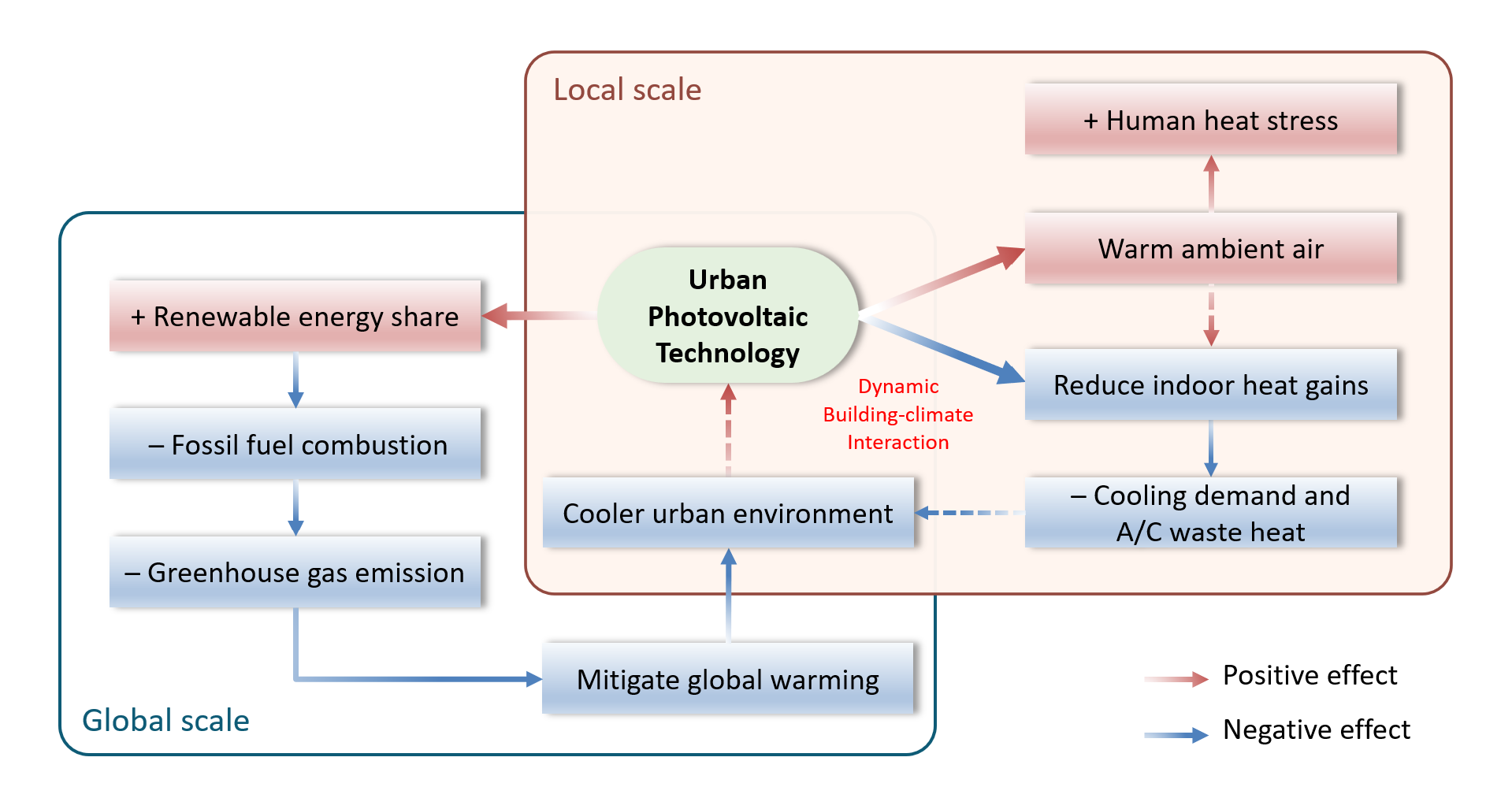Research
Climate and energy systems are deeply interconnected, creating feedback loops that amplify challenges at both global and local scales. Rising temperatures drive increased cooling demand, whose waste heat further intensifies urban warming. Urban renewable technologies, such as PV, have great potential to improve energy efficiency and mitigate global warming.  Figure 1: PV role in the building energy and urban climate feedback.
Figure 1: PV role in the building energy and urban climate feedback.
My research primarily focuses on the performance and impact of various urban heat island mitigation strategies within the fields of urban climate and building energy, leveraging both experimental and simulation methodologies.
<!DOCTYPE html>
Experiment Study
We have conducted a full-scale experiment to explore different rooftop mitigation strategies. Below is a video introducing the experiment we conducted at HKUST, exploring different rooftop mitigation strategies.
Video 1: Rooftop Mitigation Strategies Experiment.
Modelling Study
When city has large-scale implementation of vertical PV facade, their impacts on urban energy balance are unknown. To fill the research gap, a building-integrated photovoltaic parameterization scheme has been developed and incorporated into a building energy model coupled with a single-layer urban canopy model (BEM-SLUCM). This modelling framework facilitates a detailed analysis of indoor-outdoor interactions and assesses the impacts of PV and green strategies on urban climate.
 Figure 2: Urban Canopy Model Framework.
Figure 2: Urban Canopy Model Framework.
Additionally, a bottom-up physics-based urban scale building energy model is developed to estimate the performance of renewable and energy-efficient strategies from the building to the city scale.
Curious about how your building works in terms of energy efficiency? Click here to explore the energy use of buildings across Hong Kong!

Figure 3: Testing retrofit measures using the Urban Scale Building Energy Model.
